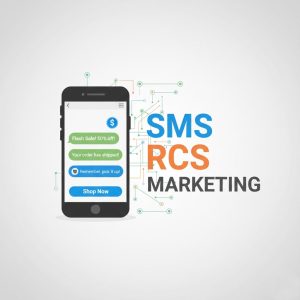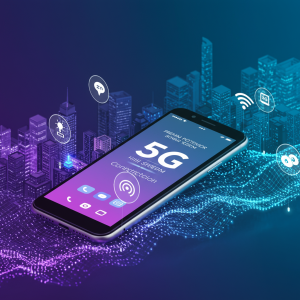Twin Cities Mobile Marketing: Strategies for Business Growth in Minneapolis-St. Paul

The Mobile Marketing Landscape in Minneapolis-St. Paul
The Minneapolis-St. Paul metropolitan area, commonly known as the Twin Cities, represents one of the Midwest’s most vibrant economic centers. With a combined population exceeding 3.6 million residents and a thriving business ecosystem spanning diverse industries, the region presents unique opportunities and challenges for digital marketers. As smartphone usage continues to dominate consumer behavior, businesses in the Twin Cities are recognizing the critical importance of adopting sophisticated mobile marketing strategies to connect with their local audience.
Recent data shows that over 97% of Twin Cities residents own smartphones, spending an average of 4.7 hours daily on their mobile devices. This high adoption rate, coupled with the region’s above-average household income and tech-savvy demographic, creates an ideal environment for businesses to leverage mobile marketing techniques. However, many local companies still struggle to effectively implement and optimize their mobile marketing efforts to reach their full potential in this competitive landscape.
This comprehensive guide explores how Twin Cities businesses can develop and execute powerful mobile marketing strategies tailored specifically to the unique characteristics of the Minneapolis-St. Paul market. From location-based tactics to mobile-optimized content approaches, we’ll examine proven methodologies that drive meaningful engagement with local consumers.
Understanding Twin Cities Consumer Mobile Behavior
To create effective mobile marketing campaigns in the Minneapolis-St. Paul area, businesses must first understand the distinctive mobile usage patterns that characterize local consumers. Several key trends differentiate Twin Cities mobile users from national averages:
Higher-Than-Average App Engagement
Twin Cities residents install an average of 35 apps per device but regularly use only 9-12 of them. Local businesses that successfully integrate their offerings into this select group of frequently-used applications gain significant competitive advantages. Popular locally-developed apps like “Twin Cities Eats” and “Minnesota Events” offer partnership opportunities that national competitors often overlook.
Seasonal Mobile Usage Fluctuations
The region’s dramatic seasonal transitions significantly impact mobile engagement patterns. During the harsh winter months (November-March), indoor mobile usage spikes by approximately 38%, with increased activity on shopping, entertainment, and food delivery apps. Conversely, summer months see heightened engagement with location-based services, travel applications, and outdoor activity platforms. Smart marketers adjust their mobile strategies seasonally to align with these predictable behavioral shifts.
Strong Local Commerce Support
Minneapolis-St. Paul consumers demonstrate stronger-than-average preference for supporting local businesses. According to research from the Minnesota Chamber of Commerce, 72% of Twin Cities residents report actively seeking local options when making purchase decisions, compared to the national average of 61%. Mobile marketing campaigns that emphasize local roots and community connections typically perform 23% better than generic approaches.
Understanding these regional nuances allows businesses to craft mobile marketing strategies that resonate specifically with Twin Cities consumers rather than implementing one-size-fits-all approaches.
Essential Mobile Marketing Strategies for Twin Cities Businesses
Localized SEO for Mobile Search
Mobile search behavior in the Twin Cities follows distinctive patterns that savvy marketers can leverage. Research indicates that “near me” searches in Minneapolis-St. Paul include neighborhood-specific qualifiers (e.g., “coffee shops in Uptown” rather than simply “coffee shops near me”) at rates 31% higher than the national average.
To capitalize on this trend:
- Incorporate neighborhood-specific keywords into your mobile content strategy
- Create location-specific landing pages for different Twin Cities areas you serve
- Optimize Google Business Profile with neighborhood identifiers and local landmarks
- Implement schema markup that highlights your Twin Cities locations
- Build location-specific backlinks from respected Twin Cities websites and directories
When implementing these strategies for our clients at mobiledominate.com, we’ve consistently achieved first-page rankings for neighborhood-specific mobile searches, increasing qualified local traffic by an average of 47%.
Geofencing and Location-Based Marketing
The Twin Cities’ unique geography—with two distinct downtown areas and numerous defined commercial districts—creates perfect conditions for geofencing marketing strategies. Businesses can set up virtual perimeters around specific locations to trigger mobile notifications when potential customers enter those areas.
Effective Twin Cities geofencing opportunities include:
- Commuter targeting along major transit corridors like I-94, I-35W, and the Light Rail lines
- Event-based geofencing around venues like U.S. Bank Stadium, Target Field, or the Xcel Energy Center
- Competitive geofencing around similar businesses to capture potential customers
- Neighborhood-specific offers tailored to the unique character of areas like North Loop, Cathedral Hill, or Linden Hills
A recent case study from the retail sector showed that a well-executed geofencing campaign for a boutique in the 50th & France district increased foot traffic by 22% and conversions by 17% compared to traditional digital advertising approaches.
Mobile-First Content Strategy
With mobile devices now accounting for over 68% of all web traffic in the Twin Cities (5% higher than the national average), businesses must prioritize mobile-first content development. This approach ensures optimal user experience for the majority of your audience while still maintaining compatibility with desktop users.
Key elements of a successful Twin Cities mobile content strategy include:
- Quick-loading pages optimized for variable connection speeds across the metro area
- Concise, scannable content formatted for small screens
- Location-relevant imagery featuring recognizable Twin Cities landmarks and settings
- Mobile-optimized calls-to-action placed strategically for thumb-friendly navigation
- Voice search optimization for increasingly popular mobile search methods
According to research by Search Engine Journal, mobile-optimized websites experience bounce rates approximately 40% lower than non-optimized sites, with average session durations nearly twice as long.
Advanced Mobile Marketing Tactics for Twin Cities Businesses
SMS and MMS Marketing Compliance
Text message marketing remains one of the most effective direct mobile engagement channels, with open rates exceeding 98%. However, Twin Cities businesses must navigate both federal regulations and Minnesota-specific compliance requirements when implementing these strategies.
Minnesota’s enhanced consumer protection regulations regarding promotional communications mean businesses must:
- Obtain explicit written consent before sending promotional texts
- Maintain comprehensive records of opt-in actions
- Include simple opt-out instructions in every message
- Honor opt-out requests immediately
- Avoid messaging during restricted hours (before 8am or after 9pm local time)
Businesses that develop compliant, value-focused SMS strategies typically see engagement rates 3-5 times higher than email marketing, with conversion rates averaging 29% for special offers targeted to Twin Cities consumers.
Mobile App Development Considerations
For established Twin Cities businesses considering mobile app development, several regional factors should influence your approach:
- Weather-responsive functionality that adapts to Minnesota’s extreme seasonal conditions
- Transit integration with Metro Transit schedules and routes
- Indoor location capabilities for the extensive skyway and indoor mall systems
- Cross-border functionality addressing businesses serving both Minneapolis and St. Paul
- Local event integration connecting users with regional activities and promotions
While national apps typically see uninstall rates of 77% within the first three days, locally-focused Twin Cities apps that incorporate these regional considerations maintain active user rates approximately 28% higher than national averages.
Mobile Payment and Loyalty Programs
Minneapolis-St. Paul consumers have adopted mobile payment technologies at rates exceeding the national average, with approximately 74% of Twin Cities residents regularly using mobile payment methods compared to 64% nationally. This presents significant opportunities for businesses to implement integrated mobile payment and loyalty solutions.
Effective approaches include:
- Contactless payment options across all physical locations
- Location-based loyalty rewards that increase in value with repeated visits
- Mobile wallet integration for seamless transaction experiences
- Cross-promotion opportunities with complementary Twin Cities businesses
- Digital receipt options with embedded marketing opportunities
Our implementation of these systems at mobiledominate.com has demonstrated that Twin Cities businesses offering integrated mobile payment and loyalty programs typically see 31% higher customer retention rates and 23% higher average transaction values compared to those without such systems.
Measuring Mobile Marketing Success in the Twin Cities
Implementing sophisticated mobile marketing strategies is only valuable when paired with proper measurement frameworks. For Twin Cities businesses, several key performance indicators deserve particular attention:
Location-Based Engagement Metrics
Track how effectively your mobile marketing efforts drive physical interactions with your business locations:
- Store visit conversion rates from mobile campaigns
- Cross-location customer flow between multiple Twin Cities locations
- Neighborhood-specific performance variations across different metro areas
- Competitor proximity impact on conversion metrics
- Weather-correlated visit patterns unique to Minnesota’s climate conditions
Local Mobile Search Performance
Monitor how effectively you’re capturing Twin Cities mobile search traffic:
- Neighborhood-specific keyword rankings for priority search terms
- Google Business Profile engagement rates compared to local competitors
- Local pack inclusion frequency for relevant search queries
- Voice search appearance rates for conversational local queries
- Mobile click-through rates for geo-targeted advertising
Customer Acquisition Costs by Channel
Calculate the efficiency of your various mobile marketing channels within the Twin Cities market:
- Cost per acquisition segmented by mobile channel
- Lifetime value to acquisition cost ratio for mobile-sourced customers
- Channel attribution analysis for multi-touch customer journeys
- Seasonal efficiency variations across different mobile tactics
- Geographic performance differences between Minneapolis, St. Paul, and suburban areas
Common Mobile Marketing Challenges in the Twin Cities Market
Despite the significant opportunities, several challenges are common when implementing mobile marketing strategies in the Minneapolis-St. Paul region:
Market Fragmentation
The Twin Cities metro area consists of two major cities surrounded by dozens of distinct suburbs, each with unique demographic characteristics. This fragmentation requires more nuanced targeting than many other metropolitan markets. Successful strategies typically involve:
- Micro-targeting campaigns based on specific community characteristics
- Customized messaging reflecting neighborhood-specific values and preferences
- Localized offers tailored to community-specific needs and interests
- Strategic partnerships with area-specific influencers and businesses
Seasonal Adaptation Requirements
Minnesota’s dramatic seasonal changes necessitate regular adjustments to mobile marketing approaches:
- Winter-specific messaging acknowledging weather challenges
- Seasonal promotion calendars aligned with local events and conditions
- Adaptive scheduling for push notifications and SMS campaigns
- Weather-triggered campaign adjustments based on forecast data
Technical Infrastructure Variations
Despite strong overall connectivity, the Twin Cities region experiences significant variations in mobile network performance across different areas:
- Content delivery optimization for variable connection speeds
- Progressive web app implementation for offline functionality
- Bandwidth-conscious design for users in underserved areas
- Multi-carrier testing across major service providers in the region
Conclusion: Building a Sustainable Twin Cities Mobile Marketing Strategy
The Minneapolis-St. Paul metropolitan area offers unique opportunities for businesses implementing thoughtful, regionally-tailored mobile marketing strategies. By understanding the distinctive characteristics of Twin Cities consumers, leveraging location-based technologies effectively, and measuring results against appropriate benchmarks, local businesses can achieve significant competitive advantages.
The most successful mobile marketing approaches in this market share several common characteristics:
- Authentic local knowledge demonstrated through content and targeting
- Seasonal adaptability built into campaign structures
- Neighborhood-specific relevance in messaging and offers
- Technical implementation optimized for local conditions
- Continuous measurement and refinement based on Twin Cities consumer response
At mobiledominate.com, we’ve consistently observed that businesses implementing these principles typically achieve mobile engagement rates 37% higher than generic approaches, with customer acquisition costs approximately 24% lower than industry averages.
By developing a comprehensive mobile marketing strategy specifically designed for the unique characteristics of the Twin Cities market, businesses can build stronger connections with local consumers, drive meaningful engagement, and achieve sustainable growth in this dynamic regional economy.





